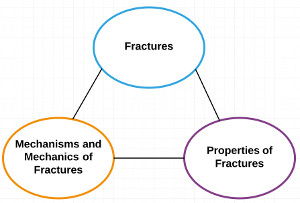| |||||||
|
|
|||||||
| Rock Fracture Knowledgebase | |||||||
|
'Knowledge is good' Emil Faber, Philanthropist and Founder of Faber College In Earth sciences, the term 'fracture' can have various meanings. Here, we use it to encompass all types of fractures at all scales. Fractures are ubiquitous in rocks; it is difficult to find an outcrop without them. Fractures mark progressive stages of rock deformation, and analyses of fracture systems in nature and in the laboratory can reveal information regarding the natural forces responsible for their formation and the behavior of rock in which they occur at the time of fracturing. Fractures have many practical societal implications. For instance, as planes of weakness in rock, they must be considered in designing and building engineering structures and the assessment of natural hazards like earthquakes, volcanic eruptions, and landslides. Fractures may impede or enhance fluid flow in the subsurface, and therefore can impact oil and gas exploration and production, aquifer management, CO2 sequestration, and waste isolation. However, the vast majority of rock fractures including those related to the issues mentioned above are not directly observable at the surface and therefore cannot be directly characterized. It is consequently essential to maximize our knowledge of fractures, their types, formation mechanisms, statistical and petrophysical properties, so that we improve our capacity to characterize them from indirect measurements. This Rock Fracture Knowledgebase is designed to provide the fundamental knowledge on rock fractures essential in preparing you for academic studies as well as solving practical problems. Knowledgebases are repositories of information about a subject, designed to allow users to retrieve this information with maximum efficiency. There are many examples of Knowledgebases. For example, MozillaZine Knowledge Base (2010) provides online information and support for Mozilla products. GEON (2010), dealing with a subject closer to our potential readers, provides information and integration tools for data in earth science. However, the Rock Fracture Knowledgebase presented here is unique, in that it focuses on a particular subject, that is, rock fracturing, in as much detail as possible and with a fresh process-based perspective. In essence, given the availability of Internet access, it provides a particular brand of rock fracture knowledge on demand anywhere and anytime. The structure of this Knowledgebase is based on hierarchical categories of concepts. Except for the home page (this current page), all other pages have navigation links at the top that traverse to higher levels in the concept hierarchy. Please use those links to help you navigate the Knowledgebase. There are three major categories in our Knowledgebase: Fractures, Mechanisms and Mechanics of Fractures, and Properties of Fractures. The interactive relationships between these major categories are represented by the arrows in Figure 1, which implies that fractures form through certain mechanisms and have characteristic properties, almost always different from those of the host rocks. Rock properties together with loading conditions determine what fracture mechanism can occur. After a fracture forms, the property of the medium changes: It becomes heterogeneous, and consequently, this affects the local stress states and the nature of subsequent deformation mechanisms. For each concept, we provide definitions and explanations, images in the form of pictures, maps and diagrams, links to further discussions and related concepts, and a selection of references. Most pictures and diagrams can be enlarged by clicking on them. Although there is some truth in 'a picture is worth a thousand words' and 'you have to see it to believe it,' this Knowledgebase is by no means a photo gallery only. It provides systematic analyses and interpretations of rock fractures based on the singular philosophy of one of the authors, and its contents are hierarchically organized using the principles of the structural geology ontology developed by the other author (Zhong et al. 2009) as part of her dissertation supervised by the senior author. As Francis Crick (1994) once noted, seeing is not as simple as one may think, and not everyone sees the same thing from the same image. According to Crick, this is because seeing is a constructive process by which the observer uses his or her past experience and knowledge to identify many different parts of an entity and attempts to combine the isolated parts into meaningful wholes. This is the reason why every geologist sees something different in a given outcrop. This Knowledgebase is designed to help the user identify critical parts in a complex structure and to extract meaning about how they were assembled together. This should maximize the user's understanding and mastery of the material, especially for students of geology, geophysics, and engineering dealing with the geological structures in the Earth's crust. Geological structures in general include other types of structures beside fractures. This comment serves as a place holder for users who wish to expand this Knowledgebase by including other types of structures besides fractures. | |||||||
| Major categories: | |||||||
| FracturesMechanisms and Mechanics of FracturesProperties of Fractures Case Studies | |||||||
| Reference: |
|||||||
| Aydin, A., 1996 Crick, F., 1994 GEON, 2010 MozillaZine Knowledge Base, 2010 Zhong, J., Aydin, A., McGuinness, D.L., 2009 |
|||||||
|
Readme | About Us | Acknowledgement | How to Cite | Terms of Use | Ⓒ Rock Fracture Knowledgebase |
|||||||
